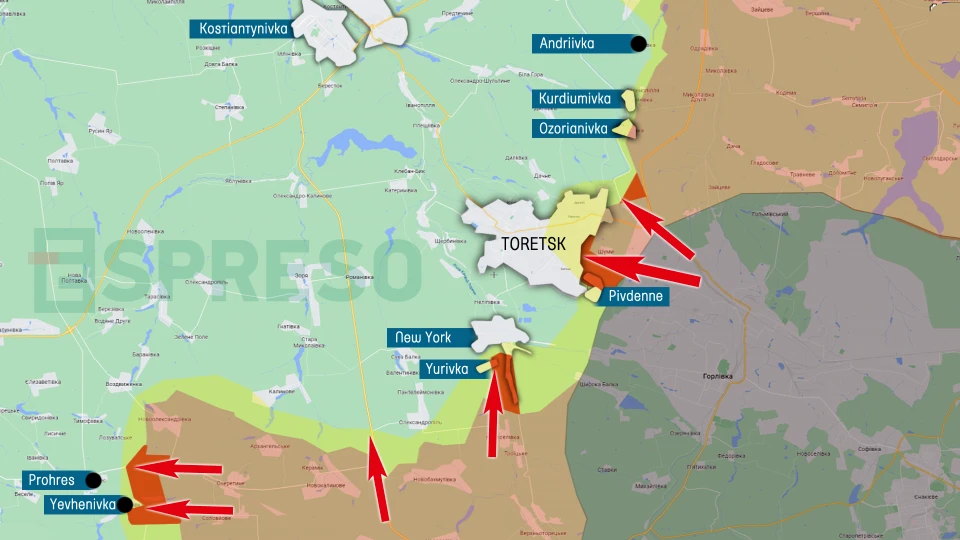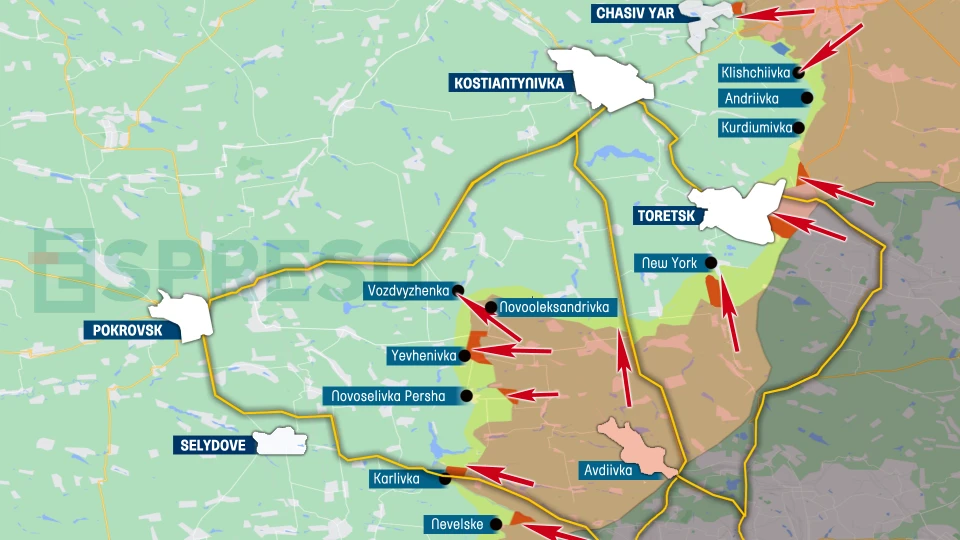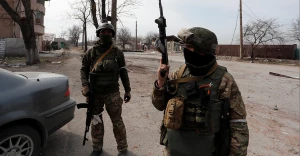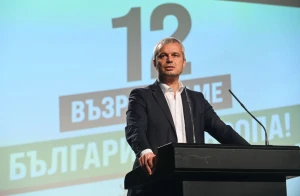
Russia deploys over 650,000 troops along entire front line. Serhiy Zgurets' column
The Pokrovsk, Toretsk, and Kramatorsk sectors remain the hottest frontline spots. These areas witnessed the largest number of clashes during the week, with the total number of attacks reaching 200 per day
Ukraine receives another battery of Patriot air defense systems from Germany
Germany has handed over the third battery of Patriot air defense systems to Ukraine. The German Ambassador to Ukraine announced this. The Patriot system will be delivered to Ukraine in the PAC-3 version, which means it will be able to intercept ballistic missiles, including Russian Kinzhal, Zircon, Kh-22, and Iskander missiles. According to official reports, Ukraine now has 5 batteries of Patriot air defense systems. At least 3 more systems are on the way. Ukraine is also expected to receive a certain number of Patriot systems from the United States.
Russia has concentrated over 650,000 troops along the entire front line
The Pokrovsk, Toretsk, and Kramatorsk directions remain the hottest spots on the frontline today. The largest number of combat engagements occurred in these areas during the week, with the total number of clashes reaching 200 per day, an unprecedented figure. The front line is now over 970 kilometers long, with over 650,000 Russian troops operating along its entire length. Russia's actions in these three directions, particularly the attack on Chasiv Yar, the movement from Ocheretyne towards the Pokrovsk-Kostiantynivka highway, and the fighting in the Toretsk area, are elements of their operational plan. All three Russian vectors converge in Kostiantynivka. In general, all Russian efforts are driven by attempts to get closer to the Sloviansk-Kramatorsk fortified area. Russia is making every effort to achieve these goals. However, it is not certain that the Russian troops will succeed. The Defense Forces of Ukraine are also making every effort to deter the Russian army.
Frontline situation: pressure on Chasiv Yar and Toretsk continues
In the Chasiv Yar area, Ukrainian units have withdrawn from their positions in the Kanal neighborhood, which was completely destroyed by Russian artillery. Given the current circumstances, this step is fully justified and logical. Russian troops launched an attack on Chasiv Yar on April 4. In three months, they have managed to advance only to this area. It is estimated that capturing this tiny part of the city cost Russian thousands of casualties. Russia completely decimated its 98th Air Assault Division. Ukrainian troops are now holding the defensive line west of the Siverskyi Donets Сanal. According to the Ukrainian military, the defense of Chasiv Yar continues. The main goal is to deplete as many Russian resources as possible, thereby reducing the offensive potential of Russia.
The fate of Chasiv Yar will depend on the forces and means deployed by both sides and their ability to manage these resources. According to some estimates, without significant reinforcement of Russia's grouping, Ukrainian troops can hold the city until October or even longer.

Map of hostilities near Chasiv Yar as of July 5
The situation near Toretsk also remains difficult. According to various estimates, Russia has more than 10,000 personnel in this area. Ukrainian units in the Toretsk sector are implementing mobile tactical defense tactics. In some areas, Russia has a 1 to 10 advantage in manpower. Currently, the front line is located in the urban area of Toretsk. The Russian troops are now being held back by artillery and FPV drones. The Ukrainian military is convinced that the Russian forces will not be able to advance deeper into the city of Toretsk.

Map of hostilities in the Toretsk sector as of July 5
Russia is also making some tactical advances in the Pokrovsk direction with the intention of cutting the Pokrovsk-Kramatorsk highway and then launching an offensive toward Kostiantynivka, Kramatorsk, and Sloviansk. However, this scenario is imagined by Russia. In any case, the situation will depend on the approaches Defense Forces of Ukraine use to block Russia's advance. Currently, the Russian forces are trying to capitalize on opportunities on the battlefield that have arisen, particularly due to our slow mobilization and the delay in the supply of weapons and ammunition from our partners. However, the situation should be stabilized.

Map of hostilities in the Pokrovsk sector as of July 5.
According to the Center for Defense Strategies, Russia has utilized more than 75% of its own resources for the war against Ukraine, while the Defense Forces of Ukraine use up to 30% of their resources. Ukraine has retained its reserves, including those that have now been trained in the EU. Russia, on the other hand, has virtually no reserves for further involvement in combat. Perhaps these figures are too optimistic, but only in practice will we be able to determine whether certain estimates are realistic.
Developing the production of ground-based robotic systems
Ihor Chaikivskyi, the head of the Robotic Systems project, said that most Ukrainian drone manufacturers faced the fact that there was no technical specification from the very beginning of drone development. They did not have clearly defined parameters, dimensions, or functional purposes for unmanned ground systems. Therefore, according to Chaikivskyi, manufacturers started creating robotic systems based on their own ideas. This has become a challenge for our manufacturers, making the task more complicated.
However, Chaikivskyi stated that the main goal was to create robotic systems similar to foreign models but much cheaper to produce. He added that the Murakha robotic ground system was created from scratch from start to finish, beginning in October 2022. The complex has now been tested in its third generation, although most of the technical specifications were established in the first prototype. The complex is now continuously being improved and developed.
Ihor Chaikivskyi said that the Murakha robotic ground system project is at the stage of small-scale production. The first systems are already being delivered to the front line, and the military is already sending requests for improvements and corrections to the parts. Chaikivskyi also said that the initial stages of production of the systems were financed from their own savings.
The company received grants from the state, but today the main resource is the company's own capital. Summarizing, Chaikivskyi described the main tasks that the Murakha system can perform. According to him, the main function of the system is logistics. The system is a mobile, fairly powerful small machine for transportation. In particular, with a weight of 490 kg, the platform is capable of transporting cargo up to 1 ton.
- News












































